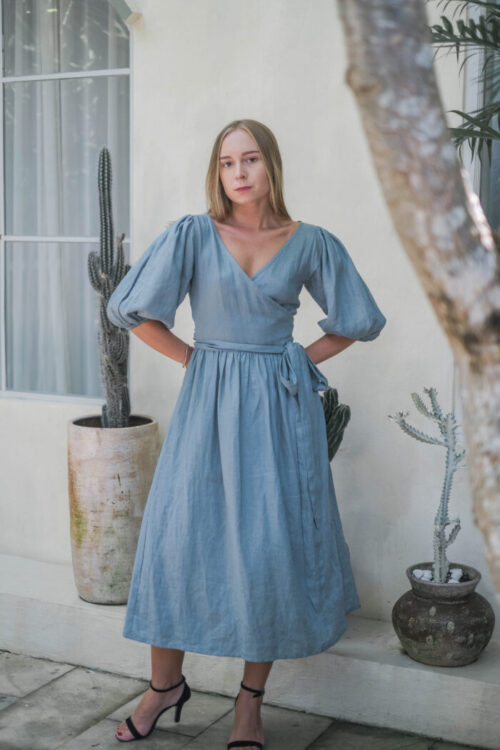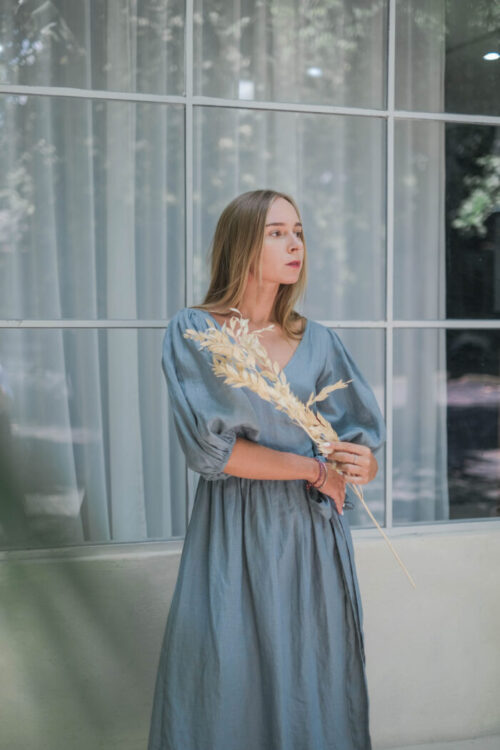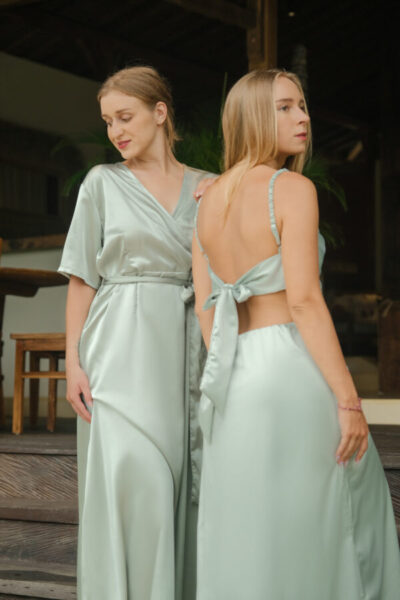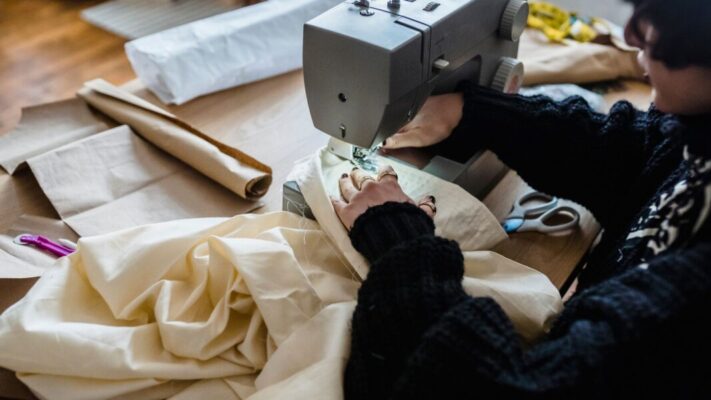Linen
Linen fabric is made from the fibers of the flax plant and is one of the oldest textiles in the world. Known for its durability, breathability, and natural luster, linen has a crisp, textured feel that becomes softer with each wash.
Linen is highly absorbent and dries quickly, making it a popular choice for warm-weather clothing, home textiles like tablecloths and napkins, and even bedding. Its natural fibers give it a slightly wrinkled appearance, which many people find appealing for a relaxed, casual look.
While linen can be more prone to wrinkles than other fabrics, it is resistant to moths and has natural antibacterial properties. Care typically involves gentle washing and air drying to maintain its quality.
The Timeless Appeal of Linen Fabric
Linen fabric is celebrated for its unique texture, durability, and natural beauty. Made from the fibers of the flax plant, linen has been used for thousands of years and remains a popular choice for both clothing and home textiles. This article explores the history, properties, types, production processes, and various uses of linen fabric, highlighting its enduring appeal.
A Brief History of Linen
The history of linen dates back to ancient civilizations, with some of the earliest evidence found in ancient Egypt, where it was used for mummification and as a symbol of wealth and purity. Flax cultivation is believed to have begun around 6,000 BC in the region of modern-day Iraq, and the fabric quickly spread to other cultures, including the Greeks and Romans.
In medieval Europe, linen became a staple for both everyday wear and fine garments. Its popularity continued to grow, especially in Northern Europe, where the cooler climate made it an ideal fabric choice. Today, linen is produced in various countries, with significant contributions from Belgium, France, Italy, and Ireland.
Properties of Linen Fabric
Linen is known for several distinct properties that make it a desirable fabric:
- Breathability: Linen is highly breathable, allowing air circulation and making it perfect for warm weather. Its moisture-wicking ability helps keep the skin cool and dry.
- Durability: One of linen’s most remarkable qualities is its strength. Linen fibers are much stronger than cotton, making it incredibly durable and resistant to wear.
- Hypoallergenic: Linen is naturally hypoallergenic, making it an excellent choice for those with sensitive skin or allergies.
- Natural Luster: Linen has a subtle, natural sheen that gives it a sophisticated appearance.
- Environmentally Friendly: Flax requires fewer pesticides and fertilizers than many other crops, making linen a more sustainable choice. It is also biodegradable.
- Unique Texture: Linen has a distinctive texture that softens over time, developing a luxurious feel while retaining its natural charm.
Types of Linen Fabrics
Linen comes in various forms, each suited for different uses:
- Plain Linen: A basic weave that is strong and durable, ideal for everyday clothing and household textiles.
- Linen Canvas: A heavier, sturdier fabric often used for bags, tents, and upholstery due to its strength.
- Linen Sateen: A luxurious weave that creates a soft and smooth finish, commonly used for high-end garments and bedding.
- Linen Voile: A lightweight, sheer fabric often used for curtains, blouses, and overlays, allowing light to filter through while providing some privacy.
- Slub Linen: This fabric features irregularities in the weave, giving it a unique texture and character, often used for casual wear and home textiles.
Production of Linen Fabric
The production of linen is a meticulous process that involves several key steps:
- Flax Cultivation: Flax plants are sown in well-drained soil and require a temperate climate. The plants grow tall, typically reaching heights of 3 to 4 feet.
- Harvesting: Once the flax plants are mature, they are harvested. This is often done by hand to avoid damaging the fibers.
- Retting: The harvested flax is soaked in water to separate the fibers from the stalk. This process can take several days and is crucial for producing high-quality linen.
- Breaking and Scutching: After retting, the flax stalks are broken to remove the woody parts, followed by scutching to separate the fibers from any remaining debris.
- Spinning: The cleaned fibers are spun into yarn, which can vary in thickness depending on the desired fabric.
- Weaving: The spun yarn is woven into fabric using various techniques, producing different textures and patterns.
- Finishing: The woven linen may undergo processes such as bleaching, dyeing, and softening to achieve the desired look and feel.
Uses of Linen Fabric
Linen is incredibly versatile and is used in a wide array of applications:
- Clothing: Linen is popular for summer wear, including shirts, dresses, trousers, and suits, due to its breathability and comfort.
- Home Textiles: Linen is often used for tablecloths, napkins, curtains, bed linens, and upholstery, adding a touch of elegance to any space.
- Crafts and DIY: Linen is favored by artisans for its durability and aesthetic appeal in various craft projects.
- Sustainable Fashion: As consumers increasingly seek eco-friendly options, linen is becoming a popular choice for sustainable fashion brands.
Care and Maintenance of Linen Fabrics
Caring for linen requires attention to ensure its longevity and appearance:
- Washing: Linen can be machine washed in cold or warm water. It is best to use a gentle cycle to prevent damage. For stubborn stains, pre-soaking may be beneficial.
- Drying: Air drying is recommended to prevent shrinkage. If using a dryer, opt for a low heat setting to avoid damage.
- Ironing: Linen wrinkles easily, so ironing is often necessary. Use a steam iron on a medium heat setting, preferably while the fabric is still slightly damp.
- Storage: Store linen garments in a cool, dry place. Avoid hanging heavy linen items, as this can lead to stretching.
Linen fabric continues to be a timeless choice for its unique properties and aesthetic appeal. Its rich history, combined with modern applications, ensures that linen remains relevant in today’s fashion and home decor markets. Whether you’re wearing a crisp linen shirt on a warm day or decorating your home with elegant linen curtains, this fabric offers comfort, style, and sustainability. As consumers increasingly prioritize eco-friendly materials, linen’s natural characteristics make it a fabric that will endure for generations to come.










